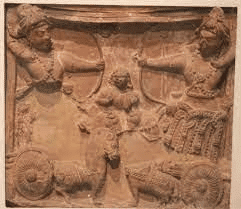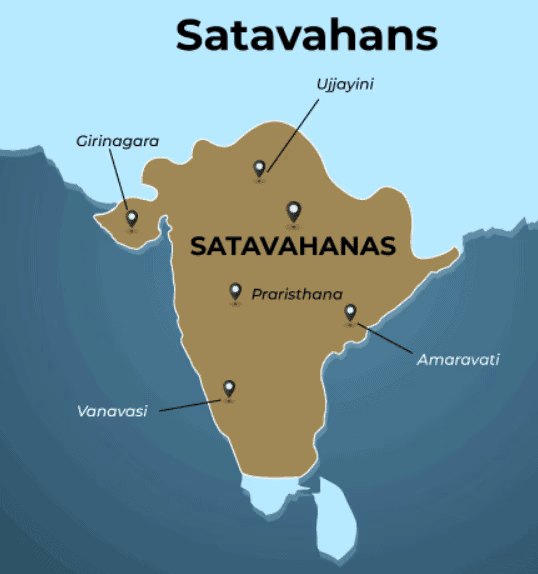History, Art and Culture: May 2025 Current Affairs | General Test Preparation for CUET UG - CUET Commerce PDF Download
Satavahana Dynasty and Culture

Why in News?
The Archaeological Survey of India (ASI) has documented 11 ancient inscriptions in Peddapalli, Telangana, belonging to the Satavahana dynasty. Written in Brahmi script and Prakrit language, these BCE 6-CE inscriptions offer key insights into the Satavahana era and early Deccan politics and culture. The inscriptions confirm Asmaka as part of one of the sixteen Mahājanapadas, highlighting its historic role and early ties to major dynasties.
Key Takeaways
- The Satavahana dynasty thrived from the 1st century BC to the early 3rd century AD.
- Known for their contributions to trade, agriculture, and cultural developments in ancient India.
Additional Details
- About the Satavahanas: They succeeded the Mauryas in central India, initially ruling from north Maharashtra and later expanding into Karnataka and Andhra.
- The Satavahanas are associated with the Andhras mentioned in the Puranas, although inscriptions do not explicitly use this name.

Important Rulers

Material Culture
- Agriculture: Iron tools such as hoes and ploughshares facilitated farming, especially in the fertile Krishna-Godavari delta.
- Urbanization: Significant urban developments included brick structures, wells, and drainage systems.
- Trade: Roman coins found in the region indicate extensive trade networks.
Social Organization
- The Satavahanas initially emerged as a Deccan tribe and later became brahmanized, re-establishing the varna system.
- Craft and commerce flourished, with merchants and artisans actively contributing to society.
Administration
- The administration was organized into a three-tier feudal system, consisting of the Raja (king), Mahabhoja (second-rank rulers), and Senapati (military chiefs).
- Districts were governed by Mahamatras who acted as officials.
Religion
- The Satavahana rulers promoted Brahmanism while supporting Buddhism, granting land to monks and fostering its growth.
- They were known for their rock-cut architecture and patronage of Buddhist art, as seen in the Ajanta Caves.
Language
- The official language was Prakrit, with significant literary contributions such as the Gathasattasai attributed to King Hala.
Conclusion
The discovery of Satavahana inscriptions provides valuable insights into the dynasty’s political and cultural impact. Renowned for their support for matrilineal influences, the Satavahanas significantly contributed to the development of urbanization and the shaping of early Deccan history. After their decline, the Ikshvakus emerged as successors in the eastern Deccan, continuing many administrative and cultural traditions, especially in the patronage of Buddhism.
Mains Question
Q: Examine the socio-political structure of the Satavahana dynasty, focusing on their administration, military system, and feudal relationships.
|
164 videos|800 docs|1158 tests
|
FAQs on History, Art and Culture: May 2025 Current Affairs - General Test Preparation for CUET UG - CUET Commerce
| 1. What was the significance of the Satavahana Dynasty in Indian history? |  |
| 2. What are some key features of Satavahana art and architecture? |  |
| 3. How did the Satavahana Dynasty contribute to the spread of Buddhism in India? |  |
| 4. What was the role of trade in the economy of the Satavahana Dynasty? |  |
| 5. What led to the decline of the Satavahana Dynasty? |  |





















